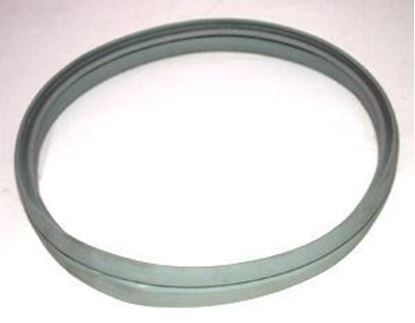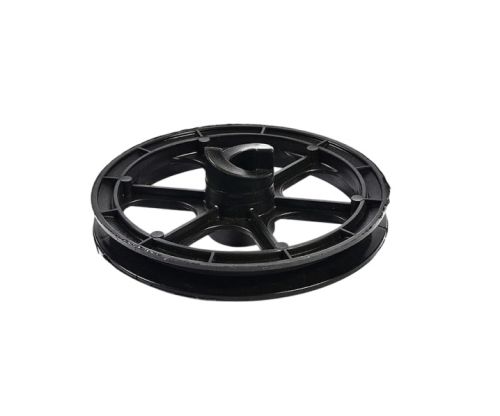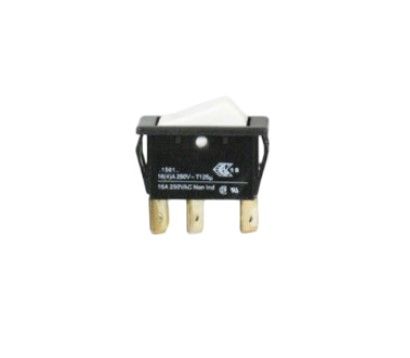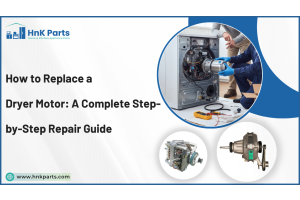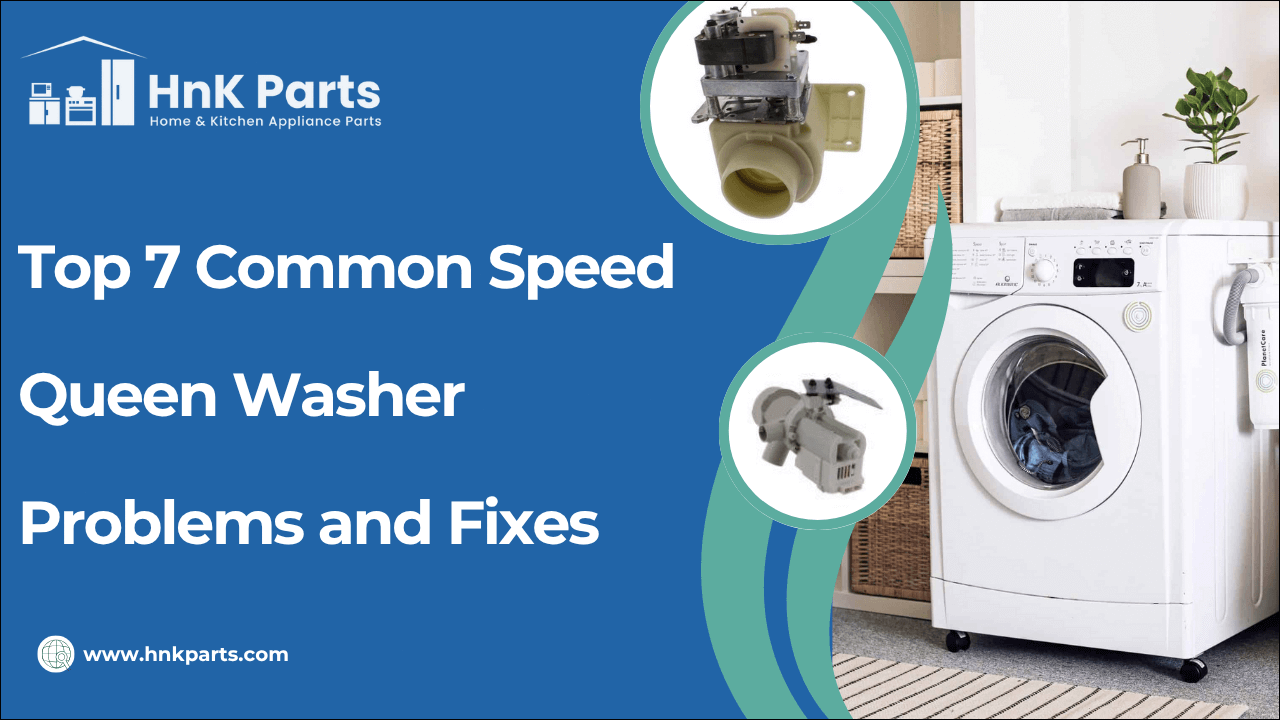
Top 7 Common Speed Queen Washer Problems and Fixes
Speed Queen washers are renowned for their robust construction and longevity, often lasting for decades with proper care. While they are built tough, like any appliance, they can occasionally encounter issues. Understanding the common speed queen washer problems and knowing how to address them early can save you time, money, and frustration. Timely speed queen washer repair is key to maintaining the performance and extending the lifespan of your machine.
This article will delve into the most frequently encountered speed queen washer problems, providing practical speed queen washer troubleshooting tips and actionable fixes to help you get your washer back in top working order.
We will cover everything from a speed queen washer not spinning to dealing with error codes to tackle common issues head-on and potentially avoid professional speed queen washer repair services.
Speed Queen Washer Not Spinning
One of the most frustrating speed queen washer problems is when the washer fails to spin. This leaves clothes dripping wet and requires additional effort to dry them. If your speed queen washer not spinning, there are several potential culprits.
Symptoms:
-
Clothes remain soaked after the wash cycle.
-
The drum does not rotate during the spin cycle.
-
Unusual noises during the spin cycle attempt.
Common causes:
-
Lid switch: A faulty lid switch is a very common reason for a Speed Queen Washer Not Spinning. For safety, the washer will not spin if it doesn't detect that the lid is closed and locked.
-
Drive belt: Over time, the drive belt can become worn, loose, or broken, preventing the drum from spinning. This is a frequent component requiring speed queen washer repair.
-
Motor issues: While less common in Speed queen washers due to their heavy-duty motors, a failing motor can also cause the machine not to spin.
-
Overloading: Putting too many clothes in the washer can unbalance the drum and prevent it from spinning properly.
Speed queen washer repair tips:
-
Check the lid switch for proper operation. Ensure it engages fully when the lid is closed. You might need to test the switch with a multimeter if you suspect it's faulty. This is a common focus of speed queen washer troubleshooting.
-
Inspect the drive belt for wear or damage. If it's loose or broken, it will need to be replaced. Belt replacement is a common speed queen washer repair.
-
Reduce the load size to prevent overloading.
-
If you suspect a motor issue, it's often best to consult a professional for speed queen washer repair.
Speed Queen Washer Not Starting
A washer that won't start is another major speed queen washer problem. This can be a simple fix or indicate a more complex issue requiring speed queen washer repair. If your speed queen washer not starting, here's what to check.
Possible causes:
-
Power supply
-
Door lock issues
-
Faulty speed queen washer control board
-
Start button/knob
Speed screen washer troubleshooting tips:
-
Verify the power connection and check the circuit breaker.
-
Close the washer door firmly and ensure the door lock engages.
-
If the door lock seems faulty, it might require replacement as part of a speed queen washer repair.
-
If you suspect a problem with the speed queen washer control board, try resetting the washer by unplugging it for a few minutes and then plugging it back in.
-
Inspect the start button or knob for any visible damage or sticking.
Why Is My Washer Squeaking?
A squeaking noise during the wash cycle can be annoying and is a sign that something isn't quite right. Understanding why is my washer squeaking is the first step to fixing it. This is one of the more common audible speed queen washer problems.
Causes:
-
Worn-out belts
-
Bearing issues
-
Drum issues
-
Suspension issues
When to consider speed queen washer repair or part replacement
If you've identified worn belts as the cause of why is my washer squeaking, replacing them is a relatively straightforward speed queen washer repair.
-
Bearing issues often require professional speed queen washer repair.
-
If you suspect something is caught in the drum, you may need to partially disassemble the washer to remove it. This can be part of speed queen washer troubleshooting.
-
Significant squeaking often warrants a closer inspection and potential speed queen washer repair by a technician.
Washing machine leaking from bottom
A leak is a clear indication of a speed queen washer problem that needs immediate attention. If you find your washing machine leaking from bottom, identifying the source is crucial.
Prevention, early identification:
-
Regularly inspect hoses for wear and tear.
-
Ensure hoses are securely connected.
-
Clean detergent dispensers periodically.
Address any signs of leakage immediately to prevent water damage and more extensive speed queen washer repair. Early identification of a washing machine leaking from bottom is vital.
Control Issues with Speed Queen Washer
Problems with the control panel or cycles are another form of speed queen washer problems. While speed queen washer control boards are known for their reliability, they can occasionally malfunction.
Speed queen washer control board failures:
The speed queen washer control board might display incorrect information.
-
Buttons or knobs may not respond.
-
Cycles may not complete.
-
Error codes may appear.
-
Try resetting the washer.
-
Consult the owner’s manual for speed queen washer troubleshooting steps.
-
If the speed queen washer control board is unresponsive, it likely needs to be replaced.
-
Ensure no power surges or fluctuations affect the speed queen washer control board.
Washer Not Draining Properly
If your washer fills with water but doesn't drain, it's a clear speed queen washer problem.
-
Water remains in the tub.
-
The clothes are still wet.
-
The washer stops mid-cycle.
Causes:
-
Clogged drain pump filter or hose
-
Faulty drain pump
-
A faulty lid switch or pressure switch
-
Kinked drain hose
DIY speed queen washer troubleshooting for drainage:
-
Check and straighten the drain hose.
-
Clean the drain pump filter.
-
Detach and clear any blockages in the drain hose.
-
If the drain pump appears to be the issue, it may need to be replaced, a common speed queen washer repair.
Error Codes and What They Mean
Speed Queen washers use error codes to signal specific speed queen washer problems. Understanding these codes is crucial for effective speed queen washer troubleshooting.
-
Consult your manual
-
Common Codes: ‘ub’, ‘dC’, ‘nd’
-
Redistribute load, close door properly, check hose for kinks
-
Persistent codes, internal issues like the speed queen washer control board
Common Washing Machine Issues and How to Solve Them
While Speed queen washers are built for durability, knowing how to identify and address common speed queen washer problems is essential. From a speed queen washer not spinning to a washing machine leaking from bottom, many issues can be resolved with basic speed queen washer troubleshooting. Addressing issues washer squeaking or problems with the speed queen washer control board promptly can prevent further damage. Timely speed queen washer repair and routine maintenance are key to preventing future speed queen washer problems and ensuring long-term performance. HnKParts is the one-stop solution for all your home appliance needs. We offer a vast selection of washing machine replacement parts near you online. It includes motors, hoses, agitators, timers, and much more.
FAQs
Why does my Speed queen washer keep stopping?
Your Speed queen washer may be stopping mid-cycle due to a few reasons, including a faulty lid switch assembly, an unbalanced load, a power issue, or the washer thinking the fill cycle took too long. A hard reset by unplugging the machine for 5 minutes might also help.
How long is a Speed queen washer under warranty?
Speed queen washers typically come with warranties ranging from 3 to 7 years. Some models may offer a 5-year parts and labor warranty. There have also been limited-time promotional offers for 10-year warranties.
Why is my Speed queen washer not going into spin cycle?
If your Speed queen washer isn't spinning, the most common causes are a malfunctioning lid switch, a clogged or damaged drain pump, a worn-out motor coupler or drive belt, or an issue with the electronic control board. An unbalanced load can also prevent spinning.


